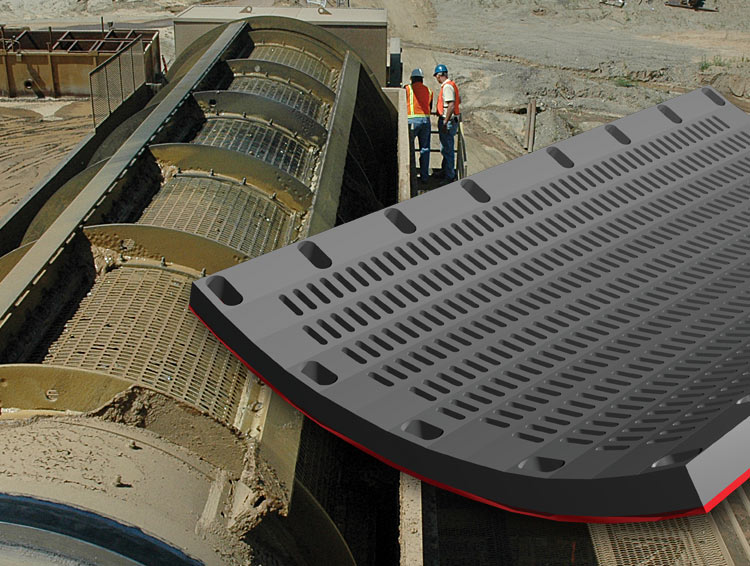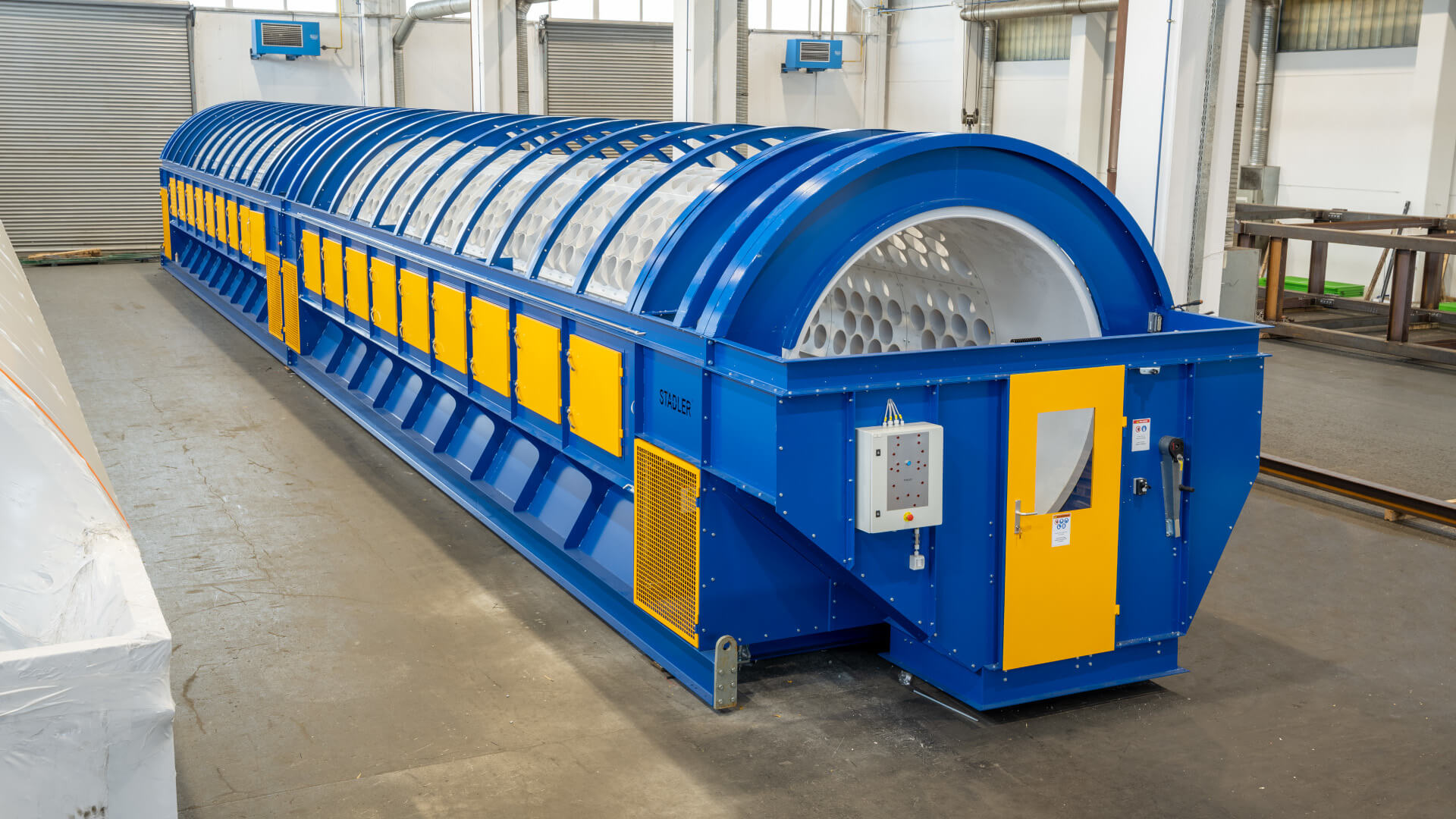The Trommel Screens Benefit: Raising Product Handling to the Next Level
The Trommel Screens Benefit: Raising Product Handling to the Next Level
Blog Article
Maximize Reusing Outcome With Trommel Screens: a Comprehensive Guide
As we make every effort to take full advantage of the reusing result, one tool that has gotten substantial attention is the trommel screen. We will certainly discover the variables that should be considered when selecting a trommel screen and dig right into methods that can be used to maximize recycling output.

The Value of Trommel Displays
Trommel screens play a critical role in different sectors due to their capability to efficiently separate and categorize various materials. These devices are made to rotate and sort with a series of products, such as soil, compost, gravel, and sand, successfully dividing them based on size and density. This capability to different products is of utmost importance in industries such as mining, building, waste monitoring, and recycling.
Among the vital reasons that trommel screens are so important is their contribution to squander decrease and reusing initiatives. By properly dividing products, these displays make it possible for the recuperation and reuse of beneficial resources from waste streams. In recycling facilities, trommel screens are commonly used to sort different types of recyclable materials, such as plastics, metals, and paper, guaranteeing that each product is effectively classified and processed for further usage.
Moreover, trommel displays also play an important function in the mining market. trommel screen. They are utilized to separate beneficial minerals from waste materials, enhancing total performance and minimizing the ecological effect of mining operations. By dividing the products based on size and thickness, trommel displays help to make best use of the removal of useful minerals while reducing the amount of waste that requires to be thrown away
Exactly How Trommel Screens Work
Trommel displays operate by rotating and sifting with various products to successfully separate and identify them based upon size and thickness. These screens contain a round drum that is tilted on its axis. The drum is generally made from mesh or perforated plates, allowing the product to travel through while retaining bigger bits.
As the drum rotates, the product is fed into the leading end. The larger particles are maintained inside the drum, while the smaller sized particles go through the mesh or perforations. The turning of the drum assists to lift and roll the material, assisting in the splitting up process.
The rate of rotation and the disposition of the drum can be adapted to regulate the sieving process. By transforming these parameters, drivers can optimize the splitting up of different materials (trommel screen). Much heavier products will work out at the base of the drum due to gravity, while lighter materials will be brought to the leading and discharged.
Trommel screens are frequently used in recycling facilities, building and construction sites, and mining operations. They can successfully refine a wide variety of products, such as garden compost, wood chips, gravel, and minerals. The capability to identify products based on size and click here for more density makes trommel screens an important tool for maximizing recycling output.

Key Advantages of Using Trommel Displays
One of the considerable benefits of using trommel displays is their ability to effectively different and categorize a variety of products based on size and thickness. This ability is crucial in different sectors, including waste, mining, and recycling management. Trommel displays are made with rotating cylindrical drums that have perforated plates or displays. As the product enters the drum, it is lifted and toppled, permitting the smaller bits to go through the openings while the larger ones remain to relocate along the drum. This process guarantees that the preferred products are divided and classified accurately.
By effectively arranging products based on size and density, trommel displays aid enhance the high quality and purity of the last item. Trommel screens also aid minimize waste and save costs by minimizing the demand for hands-on sorting and decreasing the amount of product sent to landfills.
An additional benefit of trommel screens is their versatility. They can handle a variety of materials, consisting of aggregates, compost, metropolitan solid waste, and also polluted soil - trommel screen. This flexibility makes trommel screens a necessary tool for numerous markets, allowing them to refine different kinds of materials easily
Variables to Think About When Choosing a Trommel Display
When picking a trommel display, it is vital to thoroughly take into consideration different elements to guarantee optimum efficiency and suitability for certain application needs. One of the initial factors to take like this into consideration is the size and capability of the trommel display. The size must be ideal for the volume of product to be refined, while the capacity must match the wanted output. Furthermore, the layout and construction of the trommel screen need to be assessed. It must be able and resilient to hold up against the demands of the application, such as the sort of material being refined and the ecological conditions it will go through. The display dimension and arrangement are also important variables to take into consideration. The size of the holes or fit together in the screen must be picked based upon the dimension of the material to be sorted. The display arrangement, such as the number of areas and disposition angle, can impact the efficiency and efficiency of the trommel screen. Other crucial factors to consider consist of the source of power, ease of maintenance, and any additional functions or personalization alternatives that might be needed for particular applications. In general, by thoroughly thinking about these variables, one can pick a trommel display that maximizes reusing result and fulfills the details demands of their procedure.
Approaches to Maximize Reusing Outcome With Trommel Displays
To optimize reusing result with trommel screens, it is essential to implement critical techniques that take advantage of on the screen's capacities and make best use of effectiveness. One technique is to properly size the trommel display based on the particular recycling application. In addition, it is essential to regularly keep the trommel and check screen to make certain ideal efficiency.
Conclusion
By taking into consideration key aspects such as display dimension, ability, and maintenance needs, one can select the most ideal trommel screen for their reusing procedures. Carrying out techniques like proper material preparation and routine upkeep can additionally improve the effectiveness and performance of trommel screens, eventually leading to a greater reusing output.
In reusing facilities, trommel displays are commonly utilized to sort different kinds of recyclable products, such as plastics, metals, and paper, ensuring that each product is correctly identified and processed for more use.
Trommel displays are designed with rotating cylindrical drums that have perforated plates or screens. The screen configuration, such as the number of view website sections and inclination angle, can influence the performance and effectiveness of the trommel screen.To optimize reusing output with trommel displays, it is essential to carry out critical approaches that exploit on the display's capabilities and make the most of performance. By considering vital variables such as screen maintenance, ability, and size requirements, one can pick the most ideal trommel screen for their recycling operations.
Report this page